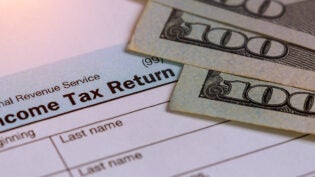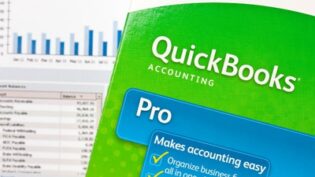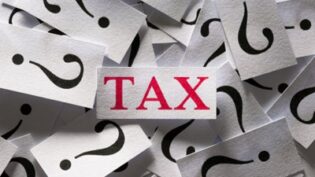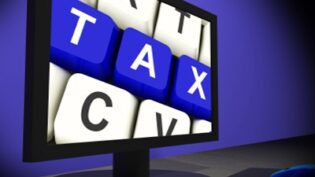
As the sole owner of my company, what are the benefits and downsides of purchasing a car through the business?
Business vehicle ownership: We do not know how the tax status of your sole owner LLC, Sole proprietorship, C corp or S corp, but a vehicle used for both business and personal use (a mixed use vehicle) does not have to be purchased and owned by the business in order for the business to deduct expenses associated with the business use of the vehicle. And the tax deductions generally are comparable whether a vehicle is company or personally purchased and owned.
However, how an LLC is taxed will affect the process the business and its owner must follow when deducting business expenses for a personally owned vehicle. For example, an LLC taxed as a corporation (C or S type) cannot deduct business expenses for a business owner’s personally owned vehicle unless the owner accounts to the business for his or her business use and operating expenses for the vehicle- typically with an expense report- and the business reimburses the owner for his or her expenses.
In contrast, an LLC taxed as a sole proprietorship can generally deduct business expenses for its owner’s personally owned vehicle whether or not the owner accounts to the business for his or her business use and operating expenses and does not need to reimburse the owner for expenses.
We do not know to what extent the vehicle will be used for business purposes, but it is our experience that business entities (i.e., corporations, LLCs, etc) do not own mixed use vehicles unless the planned business use based on miles driven for business is very high – 80% or more, for example. When companies structured as corporations (C or S types) and similarly taxed LLCs allow employees, including owner-employees, to use company owned or leased vehicles for both and business and personal purposes, the companies typically need to treat the expenses associated with their employees’ personal use of the vehicles as taxable income.
Also, employees generally need to account to the company for both their business and personal use of a company provided vehicle in accordance with the IRS accountable plan rules or all the costs associated with the employee’s use of the vehicle will be considered a taxable fringe benefit. With an accountable plan, the fringe benefit value of and company paid operating expenses for an employee’s business use of a company provided vehicle will be nontaxable to the employee.
However, even with an accountable plan, the fringe benefit value of and company paid operating expenses for an employee’s personal use of a company provided vehicle will generally be considered a taxable fringe benefit to the employee. When an employee does not account to the company for his or her business and personal use of a company-provided vehicle in accordance with the accountable plan rules, the fringe benefit value of and company paid operating expenses for both the employee’s business and personal use of the vehicle will be considered a taxable fringe benefit to the employee. The company will deduct the employee’s taxable fringe benefits as salaries and wages on its tax return and report the benefits as taxable compensation on the employee’s Form W-2.
You can review IRS information on the tax treatment of company (employer) provided vehicles at the following website (see Chapter 3, Fringe Benefit Valuation Rules):
Under IRS rules, in order to be considered an accountable plan, your reimbursement arrangement must require that your employees’ expenses have a business connection – meaning that they are paid or incurred while the employee is performing services for your firm – and that employees adequately account to you for these expenses and return any excess reimbursement or allowance within a reasonable period of time.
Under an accountable plan, employees must provide their employers with an accounting of their expenses, which typically takes the form of an expense report, within 60 days of incurring the expenses and must return any excess reimbursement within 120 days after the expenses were incurred. Generally, expense reimbursements made under an accountable plan are excluded from an employee’s wages, not subject to payroll tax withholding, and not reported on Form W-2.
In contrast, when an employer expense reimbursement arrangement is classified as a non-accountable plan (any plan other than an accountable plan), employees are not required to provide their employers with an accounting of their expenses nor return any excess reimbursements; however, expense reimbursements to employees are taxable as wages, subject to payroll tax withholding and unemployment taxes and reported on Form W-2. To develop a better understanding of the accountable plan rules, you can review the IRS guidelines on employee expense reimbursement arrangements and tax treatment at the following websites:
Properly accounting to the employer normally requires that an employee track miles driven for business and submit an expense report that shows the details of their business related travel including the destination, the business contact (person who they meet with), the business purpose for the trip and the miles driven. This requirement must be met whether a vehicle is company owned or leased or personally owned or leased.
To review the accounting and income tax implications of company owned or leased vehicles and thoroughly evaluate whether to have your business purchase and own any new vehicles, we recommend that you consult your local tax advisor or CPA. If your LLC business is taxed as a corporation (C or S type) or you have rank and file employees using company or their personal vehicles in your business, your tax advisor can help you structure your fringe benefit plans and expense arrangements to maximize your company’s business-related vehicle expense deductions and minimize your and your employees’ personal income tax liabilities.
General business vehicle expense considerations: Regardless of how a business is structured, business expense deductions for a vehicle or other business equipment, including operating expenses, depreciation and the Section 179 expense deduction, are always limited to the extent of business use. In the case of a vehicle, mileage driven for business purposes determines your business use and the amount of your allowable deductions.
Generally, you must prove or substantiate the business use of your vehicle in order to deduct any related expenses, including depreciation and Section 179 expense, regardless of whether the vehicle is owned or leased by you personally or by a business entity that you control.
Business use of a vehicle can be deducted for tax purposes through one of two methods – the actual expense method or the standard mileage rate method.
Taxpayers must choose between these two methods in the first year that they place the vehicle in service in their business and begin claiming business expense deductions for the vehicle on their tax returns. The method you choose to maximize your vehicle-related expense deductions will depend on a number of factors, including the anticipated first and subsequent year business use of the vehicle, whether the vehicle is owned or leased, depreciation expense, projected actual operating expenses, and other considerations.
Read more on vehicle history
While there are certain limitations on when the standard mileage rate method may be used, unless you use your vehicle for hire (such as a taxi) or use five or more vehicles at the same time, you generally have the choice of deducting your allowable expenses using either the standard mileage rate or actual expense methods whether you own or lease your vehicle.
When you deduct expenses under the standard mileage rate method, you deduct your business use by multiplying your business miles by a per mile rate ($.555 per mile for 2012, $.565 per mile for 2013) that is adjusted each year (and on occasion midyear) by the IRS and encapsulates all of the expenses associated with operating the vehicle, including depreciation and the Section 179 deduction.
Read more on finding auto insurance for your small business
In order to use the standard mileage rate method you must use this method in the first year that you use the vehicle in your business. Also, if you choose the standard mileage rate method for a leased vehicle, you must use it for the entire lease term.
When you deduct expenses under the actual expense method, you determine your total operating expenses (gas, oil, maintenance, repairs, insurance, annual registration fees, auto club, car washes, loan interest or lease payments, etc), determine your business use based on business miles compared to total miles, and calculate depreciation (including the Section 179 expense if qualified), inclusion amount (if a leased car) and the business portion of your operating expenses. You can review discussions on deductible automobile expenses at the following websites:
As we discussed above, tax deductions for a business vehicle vary depending on a number of factors, including whether the vehicle is purchased or leased, the type of vehicle and its acquisition cost, the operating expenses for the vehicle, the extent of business use, and other factors. For example, the cost of vehicles and other business equipment generally must be capitalized and recovered over time through depreciation deductions.
However, taxpayers can elect to deduct the cost of certain qualified property, subject to IRS limits, in the first year that it is placed in service under IRC Section 179. Qualifying property is defined as depreciable tangible personal property, such as a vehicle, that is purchased for use in the active conduct of a trade or business and is used more than 50% for business.
Both new and used property, with the exception of real estate, can be expensed under Section 179 in the first year that you place the property in service in your business. Under the American Taxpayer Relief Act of 2012 (ATRA), a maximum of $500,000 can be deducted in 2012 and 2013 under Section 179.
While vehicles may qualify for the Section 179 expense deduction, most passenger automobiles are subject to depreciation limits that prevent taxpayers from claiming large first year depreciation and Section 179 expense deductions. For purposes of the passenger automobile depreciation limits, a passenger automobile is defined as an automobile, van or truck, including an SUV, with a gross vehicle weight rating of 6,000 lbs or less.
For a vehicle placed in service in 2012 or 2013, the maximum first year combined Section 179 and depreciation expense deduction that can be claimed on a passenger automobile, including an electric vehicle, depends on whether the vehicle qualifies for the 50% bonus deprecation under ATRA. The first year limit is $11,160 for an automobile ($11,360 for a van or light truck) if the vehicle qualifies for the 50% bonus depreciation under ATRA. The first year limit for a vehicle that does not qualify for the 50% bonus depreciation under ATRA is $3,160 for an automobile ($3,360 for a van or light truck).
Vans, trucks and SUVs with a GVW of more than 6,000 lbs are not subject to the passenger automobile depreciation limits, which means that a greater portion of their cost can be written-off through the Section 179 expense and depreciation deductions in the first and subsequent years they are used for business; however, the maximum Section 179 expense deduction that can be claimed on SUVs with a GVW of more than 6,000 lbs and 14,000 lbs or less is capped at $25,000. You can review information on the Section 179 expense and depreciation deductions at the following websites:
- American Taxpayer Relief Act of 2012: tax.cchgroup.com (see Business Tax Provisions on page 9)
The following are additional discussions on the topic, some of which have not been updated to reflect the changes under ATRA:
- The Section 179 Deduction: section179.org
- Section 179 Deduction: taxguru.org
- IRS Issues 2013 Vehicle Depreciation Deduction Limits: accountingweb.com
- Internal Revenue Bulletin: irs.gov (See”.01 Limitations on Depreciation Deductions for Certain Automobiles” in Section 4)
- Administrative Procedural and Miscellaneous: irs.gov (See”.01 Limitations on Depreciation Deductions for Certain Automobiles” in Section 4)
With respect to depreciation expense, property placed in service after 1986 is generally depreciated under the Modified Accelerated Cost Recovery System (MACRS). MACRS consists of two depreciation systems, the General Depreciation System (GDS) and the Alternative Depreciation System (ADS).
Property used more than 50% in a trade or business is depreciated under the GDS rules, whereas property used 50% or less in a trade or business is depreciated under the ADS rules. Under the GDS rules for 5 year property, which includes passenger automobiles, light trucks, SUVs and vans, depreciation expense is calculated using the Double Declining Balance Method over a 5 year recovery period with a half-year or mid-quarter convention.
Under the ADS rules for 5 year property, depreciation expense is calculated using the Straight-line Method over a 5-year recovery period with a half-year or mid-quarter convention. To develop a better understanding of how to calculate depreciation expense under MACRS, you can review Chapter 4 of IRS Publication 946 at the following website:
Regardless of whether you deduct your business vehicle expenses using the standard mileage rate or actual expense methods, you must maintain a written mileage log or other records to allocate and report the business/personal use. Generally, you must prove or substantiate the business use of your vehicle in order to deduct any related operating expenses, including depreciation.
Under IRS guidelines, substantiating your business use normally requires that you record the total miles for the year, the mileage for each business use, the date of each business use, the business destination and the business purpose for the expense.
With respect to maintaining a mileage log, there are a couple of approaches that may make your task less time consuming depending on how you use your vehicle. You can account for several uses of your vehicle that could be considered part of a single use, such as a round trip or uninterrupted business use, with a single record; thus, if you traveled between several business appointments in succession, you could record the entire trip as a single event.
If your business use is consistent throughout the tax year, you may also be able to adequately substantiate your business use with a sampling. With a sampling, you keep an adequate record for part of the tax year and use that record to prove the amount of business use for the entire year; however, you must demonstrate by other evidence that the sampling is representative of your use throughout the tax year. You can review the recordkeeping requirements for deducting business vehicle expenses at the following website:
- Travel, Entertainment Gift, and Car Expenses: irs.gov (see Chapter 5.Recordkeeping)
If you operate your business from your home you will need to pay particular attention to the IRS guidelines on vehicle-related expense deductions when operating from a home-office. Basically, in order to deduct vehicle-related expenses for traveling from your home to other business locations (i.e. travel to client meetings, to local office supply stores, to the post office, etc), your trips must be primarily for business purposes AND you must operate your business from a home-office that is your principal place of business (in accordance with the IRS rules) and meets the other IRS tests for claiming the home-office deduction. The following are example discussions on deductible transportation expenses with a home-office for your review:
- Travel From a Home Office: completetax.com
- Newsletter: nardifinancial.com (select Maximizing Business Transportation Expense Deductions)
If you operate your business from a home-office, you can review IRS information on the home-office deduction to determine if your home-office qualifies as your principal place of business at the following websites:
Some IRS rules and explanations can be confusing, particularly with respect to vehicles and the Section 179 deduction and depreciation expenses. As a result, business owners generally review the details of their vehicle-related expenditures and, when those expenditures were incurred while traveling between a home-office and client sites, their home-office use with a local tax advisor or CPA.
29635 Views












